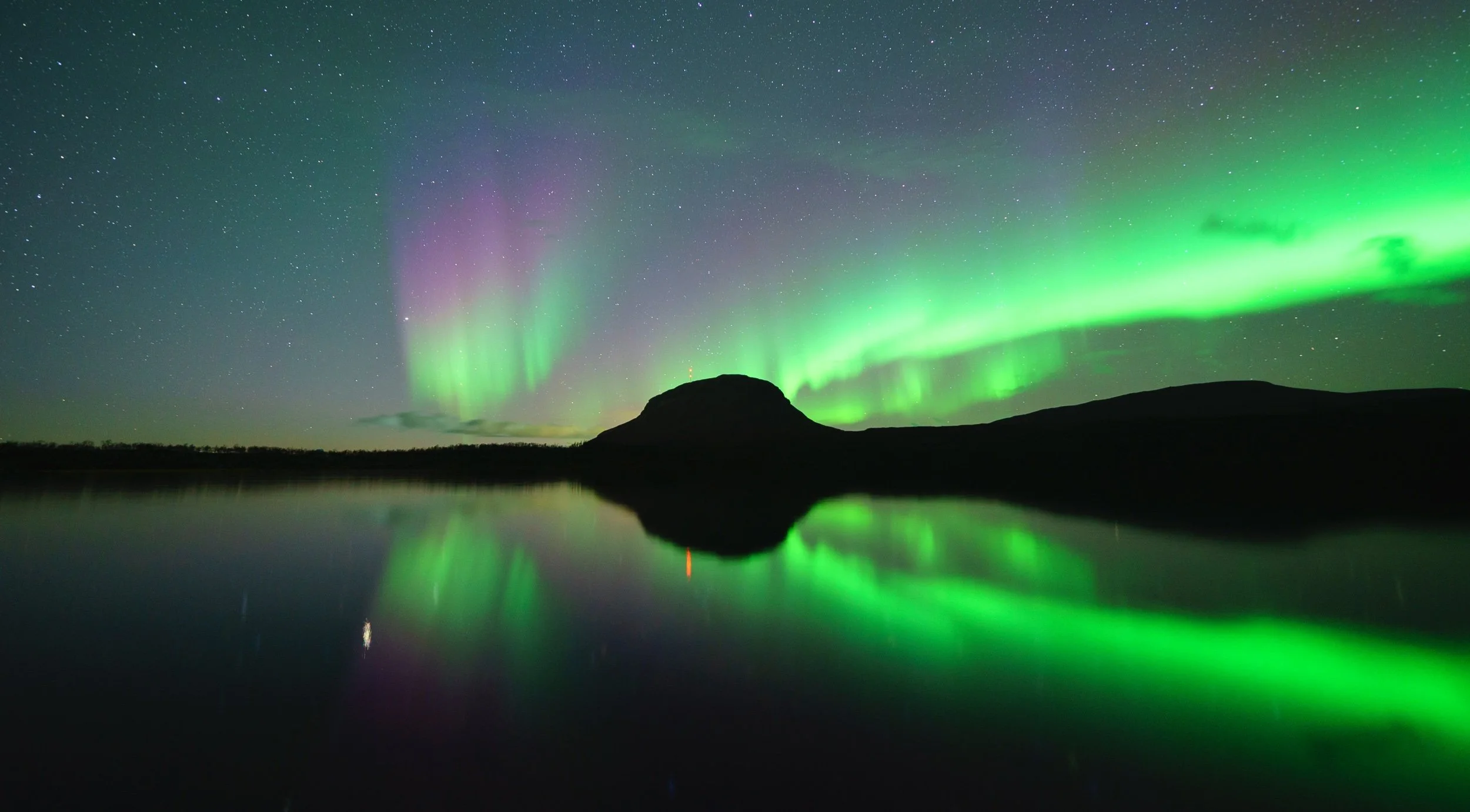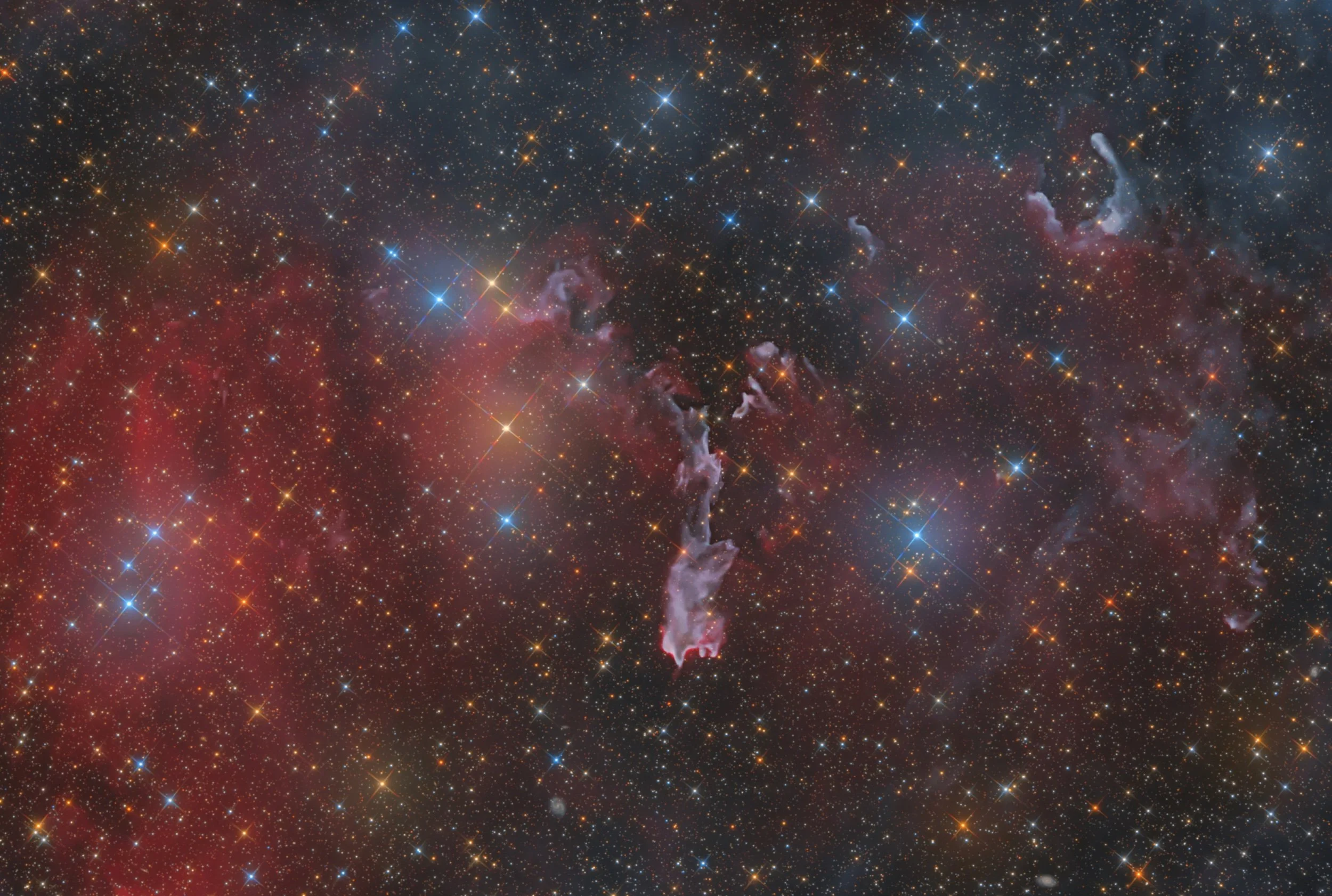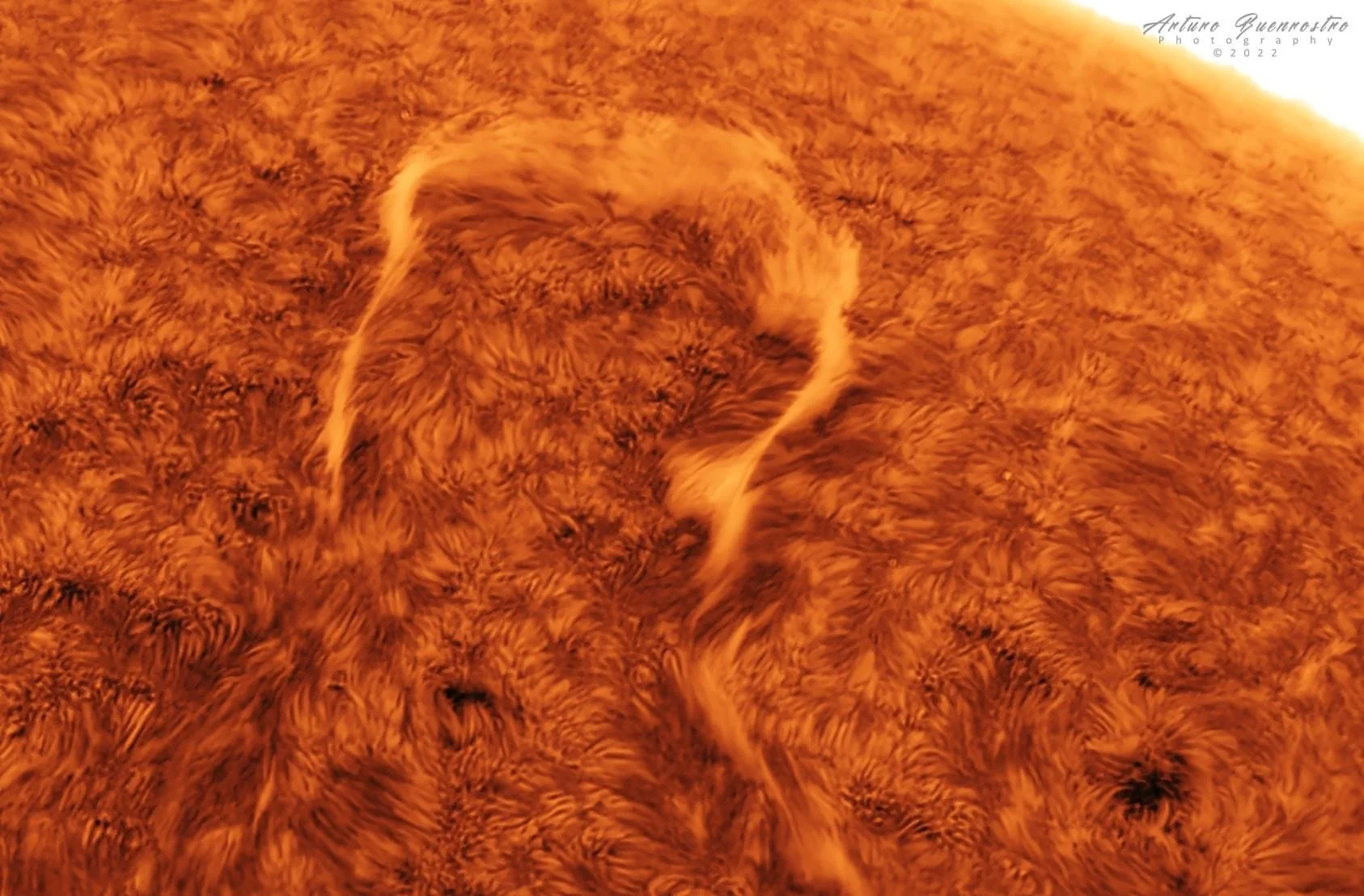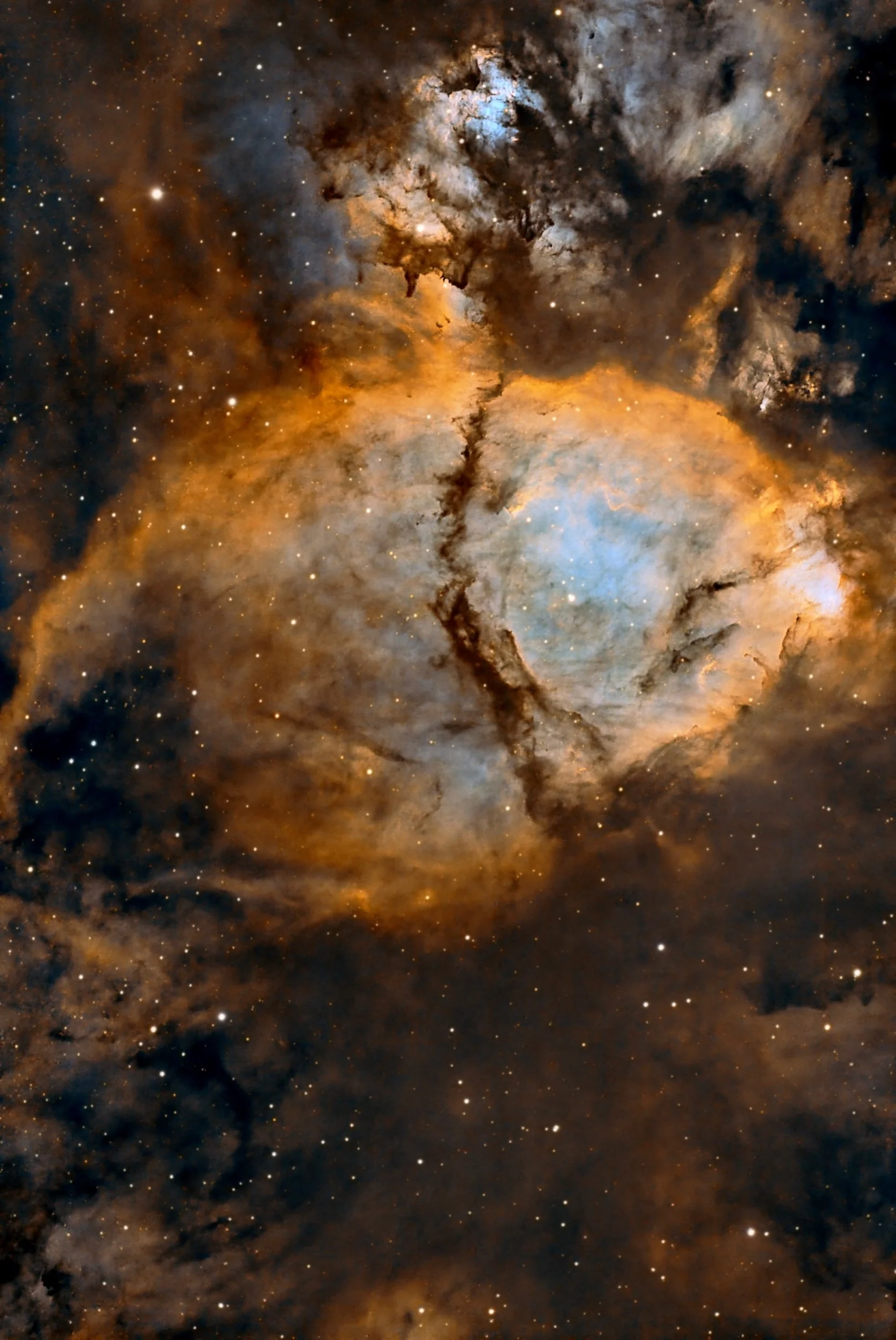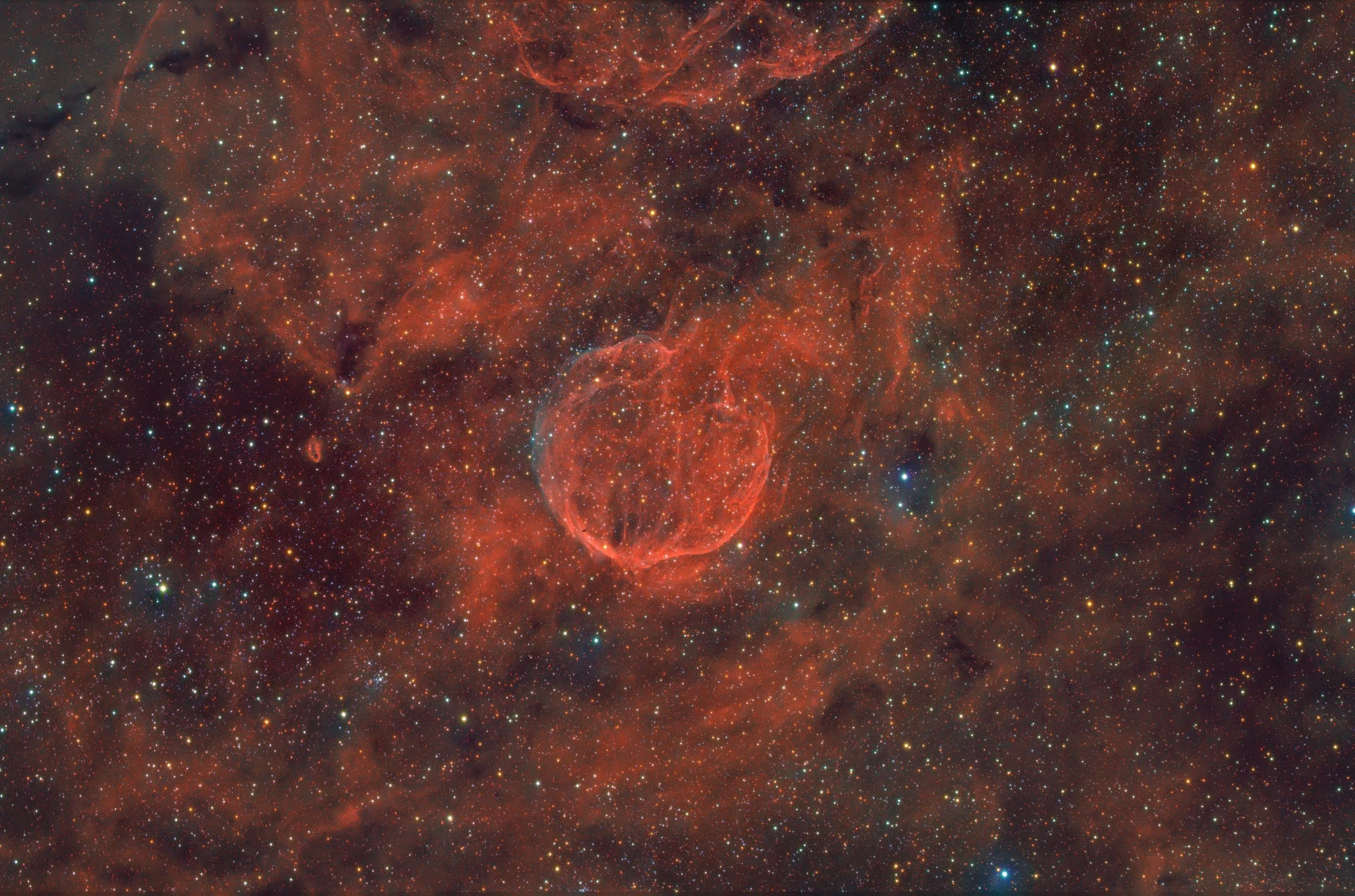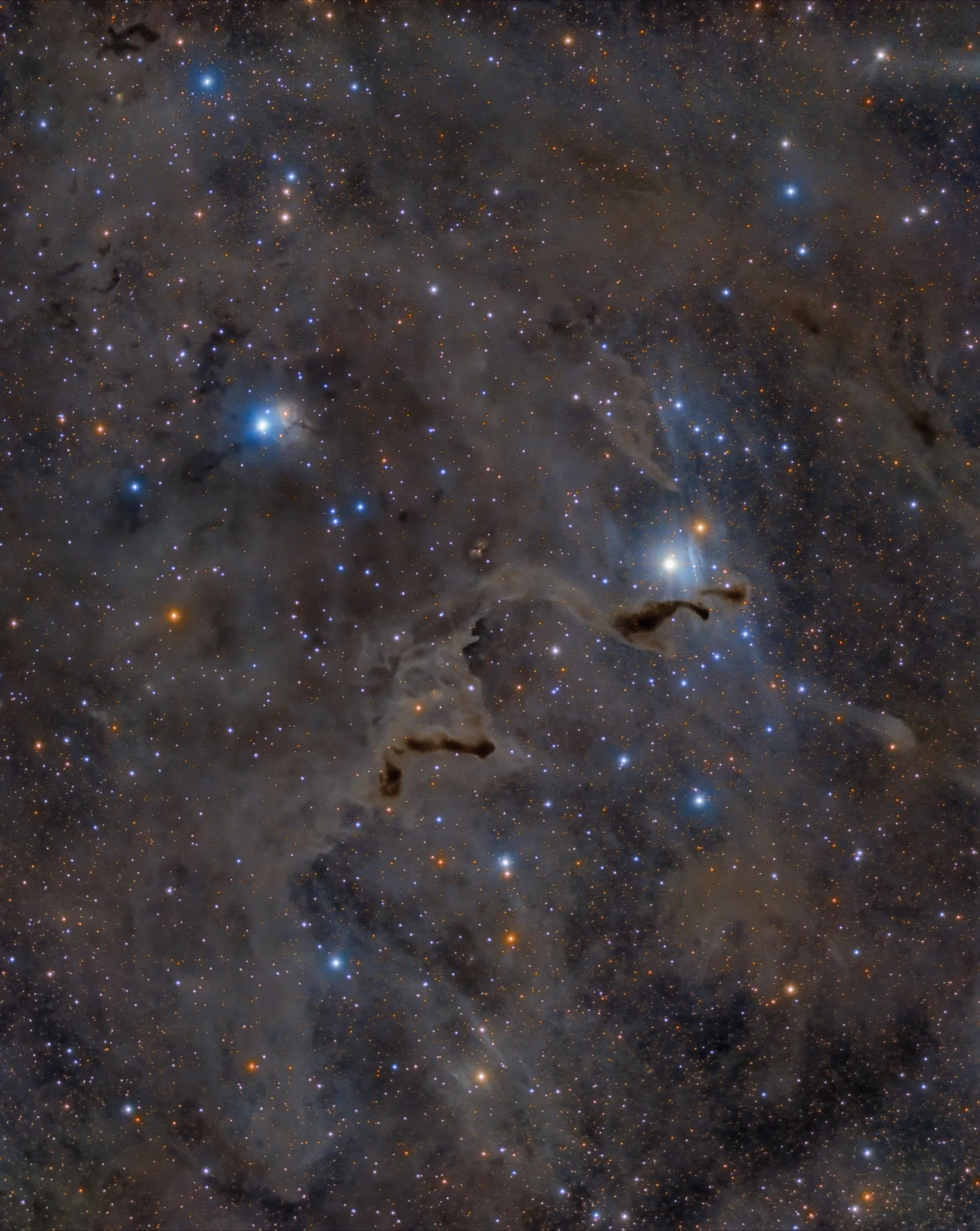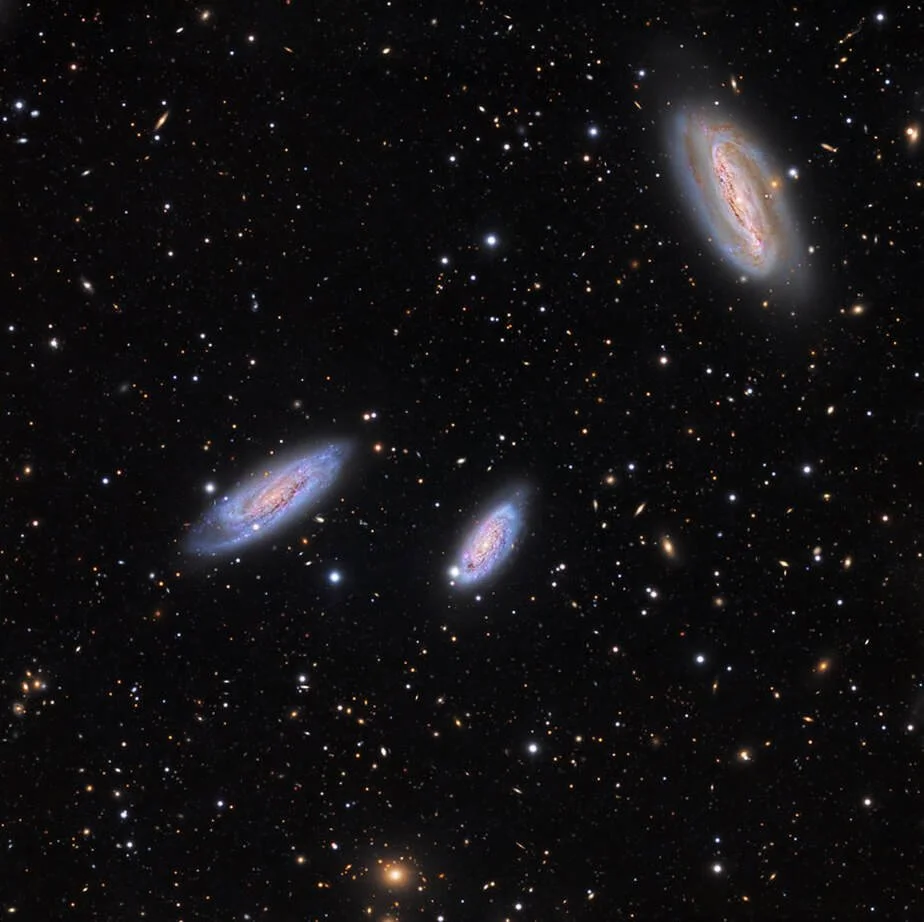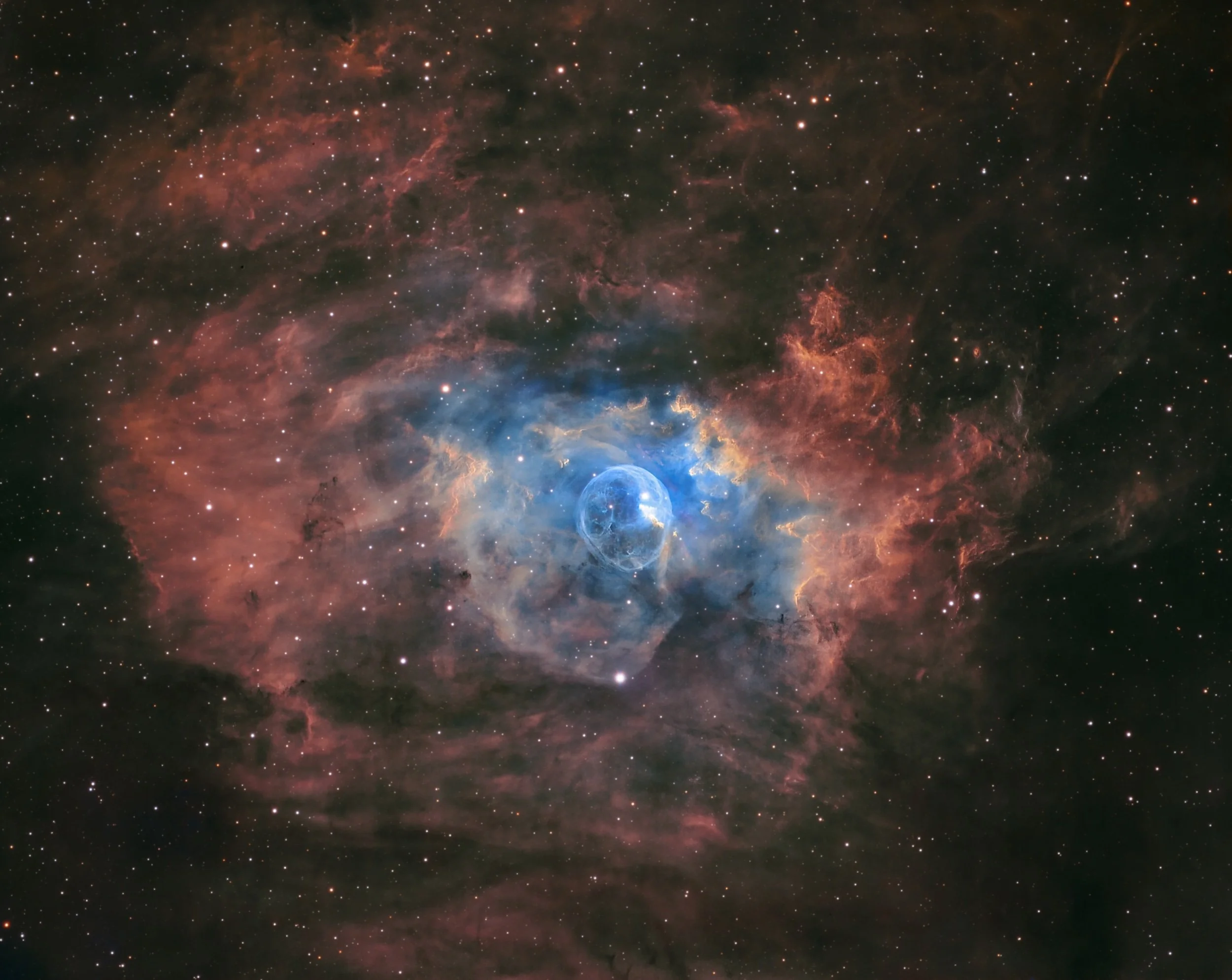
AAPOD2 Image Archives
M 34
Image Description and Details :
Messier 34 (also known as M34 or NGC 1039) is a large open cluster located in the constellation of Perseus. It was probably discovered by Giovanni Batista Hodierna before 1654 and included by Charles Messier in his catalog of comet-like objects in 1764. Messier described it as "A cluster of small stars a little below the parallel of γ (Andromedae). In an ordinary telescope of 3 feet one can distinguish the stars. "
M34 is 1500 light years away from us and includes stars of mass between 0.12 and 1 solar mass. It extends for about 35 'into the firmament, which translates into a real radius of 7.5 light years at the distance at which it is located. The cluster is barely visible to the naked eye in very dark conditions, well away from city lights and can be seen through binoculars when light pollution is low.
The age of this cluster is between that of the Pleiades (100 million years) and that of the Hyades (800 million years). In particular, the comparison between known stellar spectra and predicted values from stellar evolutionary models suggest 200-250 million years.
Konus 200/1000 @960mm, F4.8
Qhy168c @-5 °C
Sky-Watcher Eq6r Pro Mount
SvBony UV/IR-cut filter 30x60" (gain 1, offset 35)
Kstars/ekos, APP, PixInsight, PS
Copyright: Massimo Di Fusco
A calm night
Image Description and Details : Reflections here in Kilpisjärvi are quite rare due to strong winds, but that night in october I was lucky with calm weather. The auroras weren't that big, but had some nice colors. The saana mountain (1029m) in the background is one of the tallest and well-known in Finland.
Sony A7S
Sony FE 14mm f/1.8 GM
20 seconds, ISO 2500
Minor adjustments in adobe photoshop
Copyright: Dennis Lehtonen
LBN438 - The Lizard Pillar
Image Description and Details :
Little known and poorly imaged LBN438 is a dark galactic nebula located in the constellation Lizard.
The nebula is illuminated by interstellar radiation known as Extended Red Emission or ERE. This is commonly observed from UV-excited interstellar grains.
A lot of small galaxies in the background of the sky to discover.
Shooting data:
🔭: ASA Newton 254/950 F3.6
⚙️: Paramount MyT
📷: ZWO ASI2400MC at -10°C
🕶: IDAS LPS-P3 & IDAS NBZ
🎯: Skywatcher Evostar72ED + ASI290MM mini
💻: TheSkyX pro, NINA, PHD2, AstroPixel Processor (100% of treatment), PixInsight (5% of treatment), Photoshop CC (95% of treatment)
⏱: IDAS LPS-P3 = 21h (126x600”)
⏱: IDAS NBZ = 17h55 (71x900"+ 1x600")
⏱: TOTAL = 38h55
🌍: Lorraine, France
📆: Over 8 nights: August 27, 2022 August 28, 2022 August 29, 2022 September 1, 2022 September 03, 2022 September 21, 2022 September 29, 2022
Copyright: Thomas LELU
Sun
Here a shots taken last October 1, from Texas, as always a great spectacle of filaments and some protuberances, the Sun very active in its solar cycle number 25 that promises much more.
ZWO 174mm camera and Payer one Apollo M-Max
Zwo EAF focuser
Skywatcher AZEQ6 mount
Lunt 100mm double stack
HINODE SOLAR AUTIGUIDER
Fire Capture, Autostacker, Registax, Photoshop.
Dallas TX.
Copyright: Arturo Buenrostro
Fishhead Nebula
Image Description and Details :
Image taken in Chicago, IL
23 hours of total exposure using the SHO palette
Processed in Pixinsight
Telescope: Celestron 11 inch edge HD at F/10
Camera: 2600MM Pro
Chroma SHO 3nm filters
Copyright: Richard McInnis
The Iris Nebula (NGC 7023) and lots of dust
Image Description and Details : Shooting from suburban Bortle 5-6 skies, dark nebula are a real challenge for me. After two sessions on the wonderful Iris Nebula in Cepheus, I wasn't satisfied with the quality of my picture. So, I invested another night to increase the total integration time to 11 hours, which made bringing out the faint dust surrounding it possible. Hope you like it!
CTB1/Abell 85/ LBN 576
CTB 1 is a supernova remnant (SNR) in the constellation Cassiopeia…
LDN1355
Image Description and Details :
Nebula LDN 1355
Located in the constellation of Cassiopeia,
These dark nebulae lurk in the stellar lairs of the Milky Way. They often connect with the sites of low-mass star formation, but can also float in the arms of the Milky Way as simple cold molecular clouds. They do not have their own light in the visible range and are more recognizable by obscuring more distant stars. And if the astrophoto is taken with long exposure, its brownish color can be seen in the light of nearby stars.
The Helping Hand Nebula is seen toward the constellation Cassiopeia. The shape of the dust cloud darkens in the light of nearby stars, either with a bluish light or sometimes with a yellowish light, but we mainly see its brownish hue.
Photo taken halfway with my outing partner Héctor Hernández
He was in charge of the luminance part with his team, TS imagine star 130, qhy 16200a camera on an eq6 pro and RB focus Merlin 34x600s focuser
For my part, I was in charge of taking the shots in RGB, 75x120s, for each RGB channel, equipment: TS photoline 80/480, TS 0.79x reducer, asi 1600mm camera, eq6pro mount, RB focus Merlin, controlled with RB focus gaiusS
Copyright: Carlos Luna and Héctor Hernández
Barnard 150 the Seahorse Nebula
Image Description and Details : My latest astro project is Barnard 150. A dark nebula in the constellation of Cepheus. Also known as the Seahorse nebula. A dark nebula (absorption nebula), is a dense interstellar cloud that obscures the light from objects behind it, such as background stars and emission or reflection nebulae. Interstellar dust grains located in the coldest, densest parts of larger molecular clouds cause light extinction.
Imaged with:
Starfield Optics 8 (200mm) astrograph
Starizona Nexus reducer/flattener for F3
QHY268M camera and QHY filter wheel
Optolong LRGB filters
Shot from the backyard in Kitchener, Ontario, Canada. 20hrs 45min total. Processed in PixInsight.
Copyright: Shawn Nielsen | VisibleDark
The Grus Quartet of Galaxies
Image Description:
Here reveals only three of its four members in the constellation of The Crane.
Located about 60,000,000 light-years from Earth, this beautiful group of spiral galaxies is gravitationally bound.
At top-right is NGC 7582, a Seyfert Type-2 galaxy, exhibiting lots of star birth. At left is NGC 7599, with NGC 7590 at center.
The missing member of the quartet is NGC 7552, which is another 'starburst' galaxy. The elliptical galaxy, PGC 71043 is at 6 o'clock.
Many thanks to my collaborator and friend, Mike Selby, who acquired and calibrated this fine data from Observatorio El Sauce, Chile.
Copyright: Warren Keller
NGC 7635: A bubble between clouds
Image Description and Details : My last image is a Bubble nebula (NGC 7635) with SHO narrowband channel and added RGB stars.
It is an emission nebula located in the constellation of Cassiopeia. The central bubble is one of three layers of hot gas surrounding the star SAO 20575, a very hot O6.5-class star. Curiously, this star (which is the one that heats the gas so that it emits light), due to its rapid movement, is not in the geometric center of the bubble. It is seen in the lower left area of the center of the bubble. It is a very young star (about 4 million years old...) and is expected to explode as a supernova in about 15 million years (more or less a million...). Interestingly, this nebula is located in a region where another supernova has already exploded.
It's great a lot of signal of SII, and aprecciate a large structures between bubble.
Tech data:
Halpha 25 of 900" astrodon 5nm
OIII 30 of 900" astrodon 5nm
SII 25 of 900" astrodon 5nm
RGB 25 each channel 120" astdodon
Telescope: Skywatcher Esprit 150
CCD: Atik 460ex
Mount: Paramount ME
Copyright: Carlos Uriarte Castilllo


